Biceps brachii tendon injury
Some people suffer from shoulder aches for a long time while there is no sign of injury found in the analysis. Have you heard of Bicep brachii tendon injury?
In this section, I would like to introduce common symptoms and diagnosis of this injury.
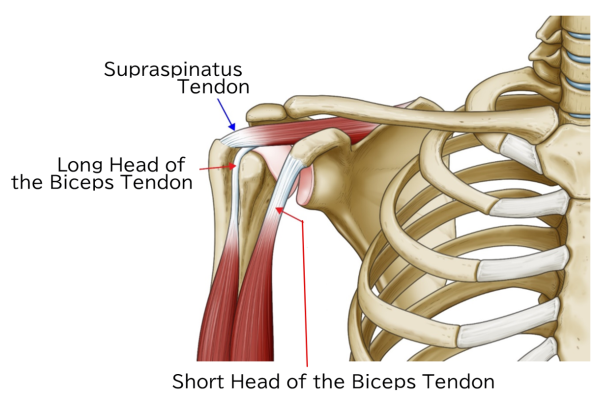
The illustration shows that the long head of biceps brachii is injured, and this causes shoulder pain when moving the arms in certain directions.
Cause of injury:
- Fell over and put the hands on the ground
- Bumped the shoulders onto the door
- Overstretched my shoulders from the driver’s seat to the rear seat when trying to grab my stuff
Common symptoms:
- Difficulties in lifting arms but it is still possible to do so
- Pain in the front shoulder
- Pain when putting the arms behind the back
What is happening to the shoulders?
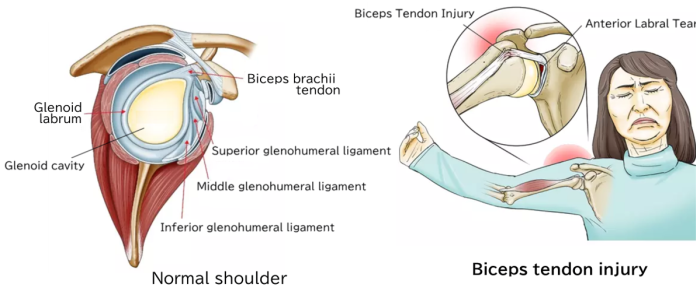
Diagnosis:
Physical examinations, MRI are commonly used for diagnosis. In some cases, oedema/edema in the bicipital groove is seen on MRI, which is one of the causes of shoulder pain. However, there are many other cases that show this fluid substance but no pain accompanied. When you find oedema/edema on MRI, please be reminded that you might possibly have injured bicep brachii tendons.
Treatment:
Conservative treatment
- Ultrasound-guided injections of an anesthetic and steroid in the bicipital groove
If it works well to relieve the pain, I would say that the injury in bicep brachii tendon is a main generator of shoulder pain. Several shots of the injection may often improve the quality of life.
- Combination of injections and physical therapies
Surgical treatment :
Surgical fixation (Tenodesis) of long head of bicep brachii tendons
The illustration shows the procedure to cut the bicep brachii tendons in the joint and screw this to the humerus.
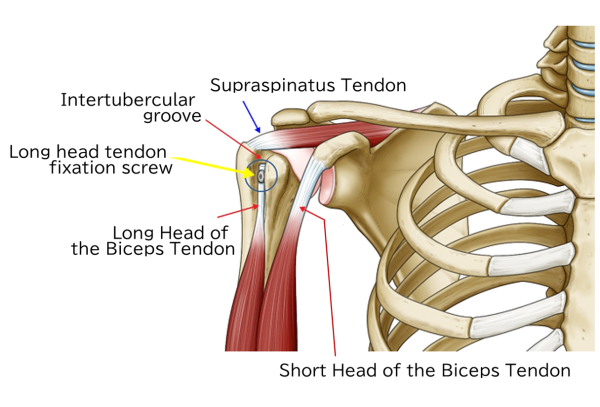
Surgical fixation (Tenodesis) of long head of bicep brachii tendons for throwing shoulder:
Subpectoral tenodesis is commonly performed to treat the throwing shoulder which are often accompanied by the injuries in bicep brachii tendon and biceps labrum complex.
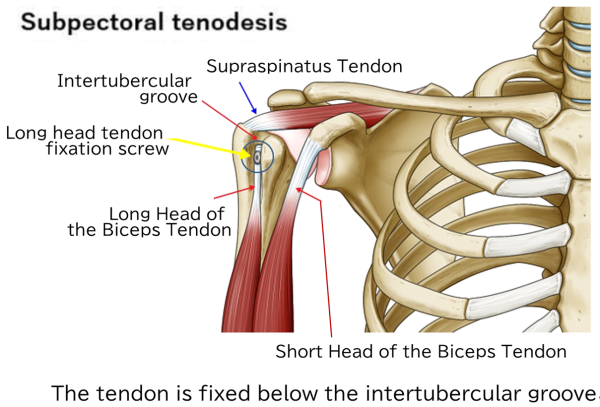
Subpectoral tenodesis is commonly performed to treat the throwing shoulder which are often accompanied by the injuries in bicep brachii tendon and biceps labrum complex.
SLAP repair procedure was a major procedure for throwing shoulder because the injury is often accompanied by biceps labrum complex lesions.
SLAP repair procedure:
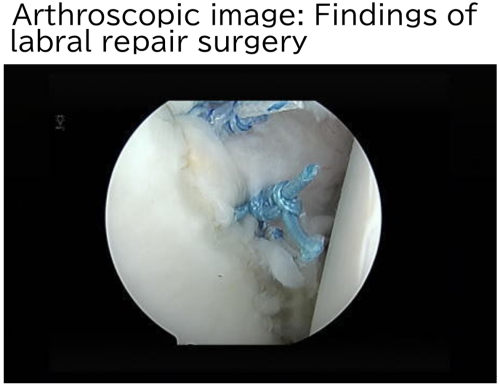
However, some study report that SLAP repair is not very successful to restore the shoulder functions, and this ends up in reoperation.
•DOI : 10.1177/03635465211039822
This thesis reports that there is no significant difference in the outcome of the labrum lesion repair and Subpectoral tenodesis.
•DOI : 10.1177/23259671221074732
This thesis concludes that 80 % of the patients with biceps tenodesis have already gone back to sports, and majority of them have returned to the same or higher level of performance.
My Recommendation:
I would like you to consider subpectoral tenodesis for those who suffer from the symptoms of bicep brachii tendon injury, or those who are skeptical about conservative treatment for throwing shoulder with labrum lesion.
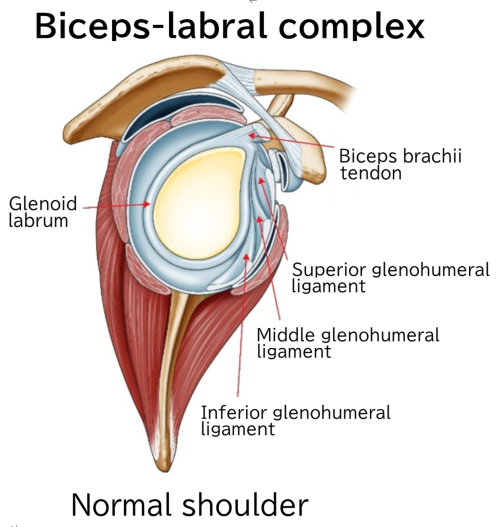
Inferior glenohumeral ligament
Even it is successful in repairing the labrum, restoring biceps labrum complex is a challenge and this also causes shoulder pain.
Clinical case:
Subpectoral tenodesis for injuries in biceps labrum complex and glenoid labrum.
Please watch this video to know how this female patient throw balls. She was not able to throw balls to the second base before the surgery.
VIDEO:
I am glad that I could introduce this procedure. If you are not satisfied with conservative treatments, or you do not feel fully recovered, please take this procedure in consideration or contact me.
addition
Suggested revision (more natural tone):
If you are struggling with a throwing-related shoulder injury and conservative treatments haven't been effective, or if you've had labral repair surgery but still feel incomplete recovery, please know that this surgical option exists and may help.
Another video features a high school athlete.
He had a throwing shoulder injury and a labral tear, for which we performed labral repair and the above-mentioned subpectoral tenodesis (biceps tendon fixation).
He underwent the surgery in the summer of his second year of high school, returned to playing in the outfield around the following spring, and was able to complete his final year of high school baseball.
He mentioned that if he hadn’t had the surgery, he would probably still be in pain and unable to throw the ball properly.
How about this?
For those suffering from throwing-related shoulder injuries who do not respond to conservative treatment, or who still do not feel fully recovered even after undergoing labral repair, I hope you’ll take the time to learn that this type of surgical option is available.
Shoulder Diseases
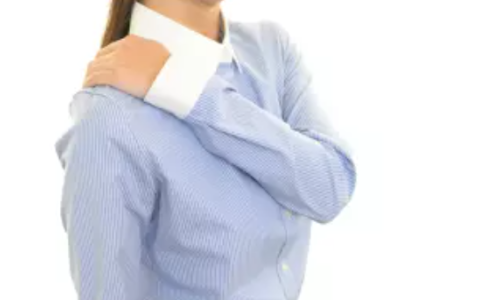
We provide explanations for various shoulder conditions. Please use this as a general guide to determine which condition may apply to you.
- Common shoulder injuries by age group
- To those who neither have frozen shoulder nor rotator cuff tears
- Throwing Shoulder Disorder
- Rotator Cuff Tears and Rotator Cuff Injuries
- Recurrent Shoulder Dislocation
- Frozen Shoulder
- Shoulder Dislocation
- Acromioclavicular Joint Dislocation
- Chronic Acromioclavicular Joint Dislocation
- Frozen Shoulder
- Calcific Tendinitis of the Rotator Cuff
- Primary Degenerative Shoulder Arthritis
- Rotator Cuff Tear-related Degenerative Shoulder Arthritis
- Non-traumatic Shoulder Instability
- Biceps Tendon Injuries
- Surgical Trends for Throwing Shoulder in Baseball Players
